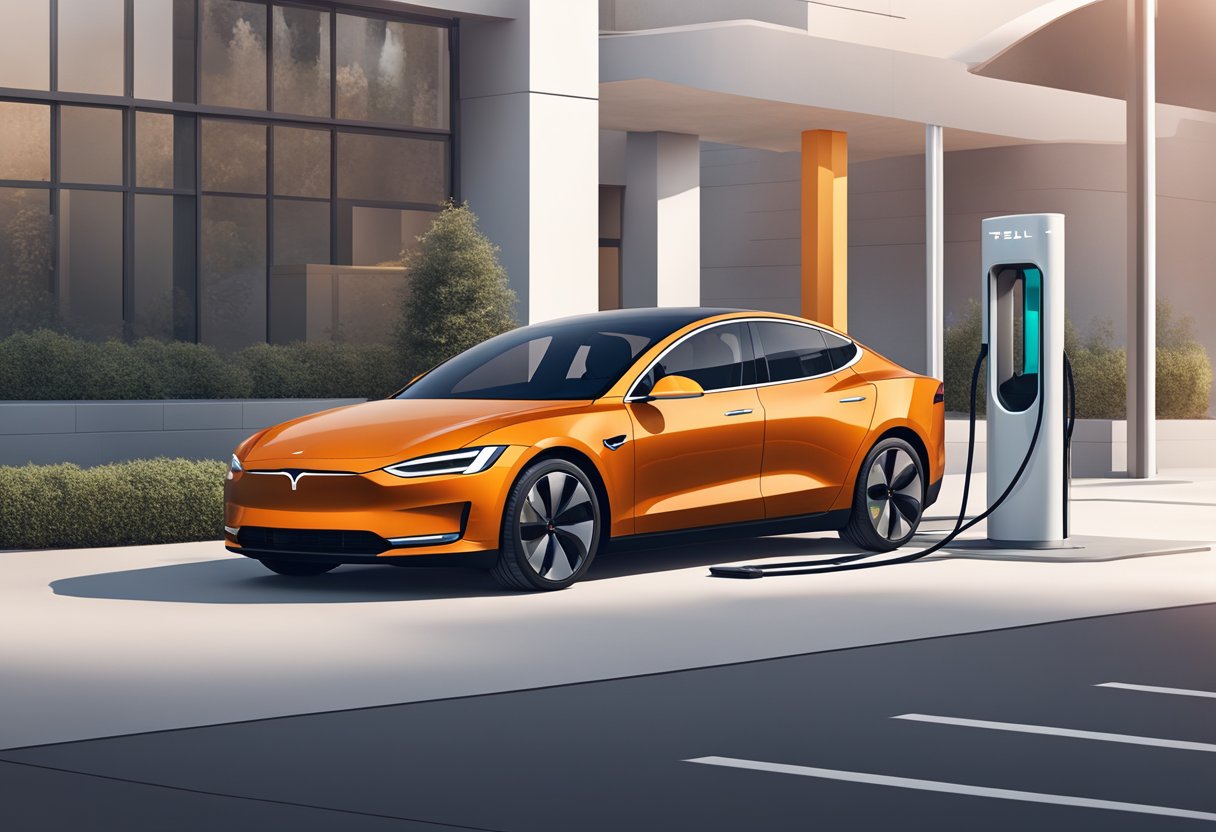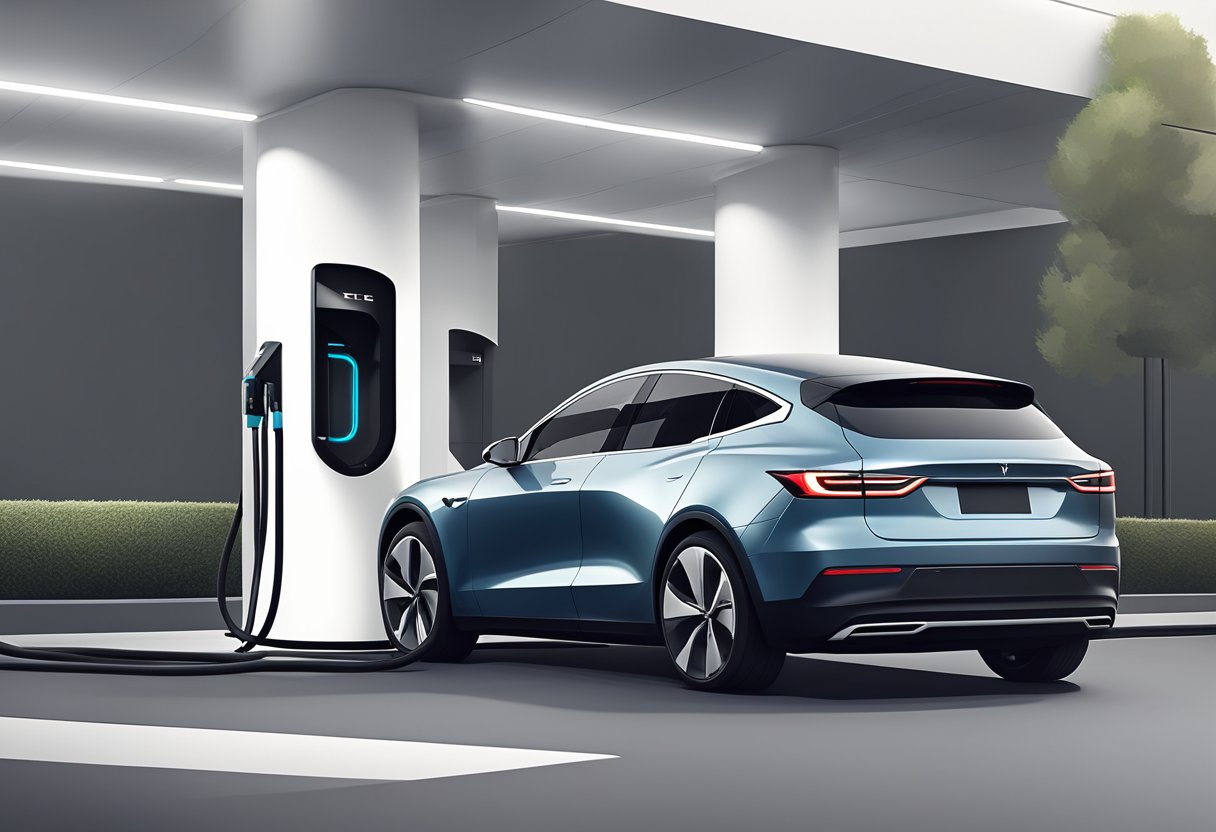As an owner of a Polestar 2, the prospect of charging your electric vehicle (EV) at a Tesla Supercharger may have crossed your mind, given the extensive network of Tesla charging stations. Tesla Superchargers are known for their quick charging capabilities, which attract a wide range of EV owners who value expedience during their travels. It’s important to understand the compatibility and the potential cost implications before attempting to charge your Polestar 2 at one of these stations.

Historically, Tesla Superchargers have been exclusive to Tesla vehicles, primarily due to their proprietary connector that is not compatible with other EVs. This has raised questions about whether other electric vehicles, such as the Polestar 2, can leverage this network. However, developments in charging infrastructure and technology are constantly evolving, and there have been initiatives to open up Tesla’s Supercharger network to non-Tesla electric vehicles in certain regions.
If you’re considering using a Tesla Supercharger for your Polestar 2, it’s critical to be aware of the current situation in your locale, as well as the necessary adapters or adjustments you may require for a successful charging session. Charging a non-Tesla vehicle at a Supercharger might come with a higher cost per kilowatt-hour compared to other fast-charging options, reflecting the premium nature of the service. Knowing these details can help you plan your charging stops more efficiently and avoid any unexpected inconveniences.
Compatibility of Polestar 2 with Tesla Superchargers
Your Polestar 2 features a Combined Charging System (CCS) port that is the standard for many electric vehicles, but Tesla Superchargers use a proprietary technology. Understanding how these systems align will determine if you can charge your vehicle at a Tesla station.
Understanding Electric Vehicle Charging Standards
The Polestar 2 is equipped with a CCS (Combined Charging System) Type 2 charging port, which is a standard among electric vehicles (EVs) for both AC and DC charging. The CCS connector allows for fast charging, supporting higher power levels which facilitate quicker energy transfer.
- AC Charging: Typically up to 11kW, depending on your on-board charger.
- DC Fast Charging: Maximum rates vary; your Polestar 2 can accommodate up to 150kW.
Tesla’s network originally did not support CCS charging, which meant using Tesla’s proprietary charging stations was not an option for non-Tesla EVs, including your Polestar 2, without an adapter.
Tesla’s Proprietary Charging Technology
Tesla Superchargers are part of a proprietary charging network designed to provide high-speed charging exclusively for Tesla vehicles. Tesla uses a unique charging port which differs from the CCS standard found on your Polestar 2. However, the landscape is evolving:
- Tesla Adapter: Some regions now offer a CCS adapter for Tesla charging stations, making it possible for non-Tesla vehicles with CCS ports to access the Tesla Supercharger network.
- Network Sharing: There are movements towards opening up the Tesla Supercharger network to other electric vehicles, which would include the Polestar 2. This situation is in flux and could change by mid-2024.
Your Polestar 2’s compatibility with Tesla Superchargers hinges on the availability of a CCS adapter and the sharing policies of the Tesla network. As updates roll out, the charging landscape will continue to change, potentially increasing your charging options.
Charging Station Availability and Network Expansion
As you consider the options for charging your electric vehicle (EV), it’s important to understand the expanding landscape of public charging stations, particularly how wide-ranging network growth and collaborative efforts are influencing accessibility.
Expansion of Charging Networks in North America
The charging network in North America is rapidly expanding. Major networks like Electrify America, EVgo, and ChargePoint have been scaling up their infrastructure. Electrify America plans to install or have under development approximately 800 charging station sites with about 3,500 chargers by December 2021. ChargePoint operates a large open charging network in North America and has a comprehensive network of over 114,000 charging spots. EVgo boasts over 800 fast charging locations nationwide and is continuously growing. Initiatives from the Biden Administration have further fueled this expansion with significant investments outlined in the Bipartisan Infrastructure Law targeting electric vehicle infrastructure.
PlugShare offers a convenient tool for locating available public charging stations, covering various networks and locations across North America. This can assist in planning your charging stops and ensuring compatibility with your EV.
Multi-Brand Cooperation and Sharing Initiatives
Cooperation among EV manufacturers like Volvo, General Motors, Rivian, Mini, and NACS (a national association representing traditional fuel retailers), is set to improve the charging experience for EV owners. In a significant development, Tesla has begun opening select Supercharger stations to non-Tesla electric vehicles, enhancing the charging station availability for a wide range of EVs. This initiative aims to improve access to the Supercharger network and contribute towards achieving a more inclusive charging ecosystem.
While Tesla‘s Superchargers are known for their rapid charge rates, offering fast and efficient charging, it’s advisable to check your vehicle’s compatibility and any necessary adapters that might be required to use Superchargers for non-Tesla vehicles.
Practical Guide to Charging the Polestar 2

When it comes to recharging your Polestar 2, understanding where and how to efficiently charge can greatly enhance your driving experience, ensuring you maximize the vehicle’s range and charging capabilities.
Locating Compatible Charging Stations
To charge your Polestar 2, you need to locate charging stations that have a Combined Charging System (CCS) inlet, as the vehicle is equipped with this standard for DC fast charging. You can find compatible charging stations in various ways:
- Google Maps: Search for “EV charging stations near me” to find nearby options.
- PlugShare App: This app provides a detailed map of charging stations, with user reviews and station status.
- Polestar App/Tesla App: While Tesla’s proprietary Superchargers are not compatible with the Polestar 2, Tesla’s Destination Chargers with a CCS combo adapter could be usable. Confirm compatibility before attempting to charge.
Remember that public charging stations can vary in charging speed, with DC fast charging stations offering a rapid charge that can significantly boost your battery in a short amount of time.
Step-by-Step Charging Process
Charging your Polestar 2 is an intuitive process. Follow these steps to charge your vehicle:
- Prepare for Charging:
- Ensure the car is unlocked.
- Open the charging hatch on your Polestar 2 to reveal the CCS charging inlet.
- Connect the Cable:
- Take the provided charging cable or the cable from the charging station.
- Insert the connector into the CCS inlet on your vehicle until it clicks and locks into place.
- Initiate the Charge:
- Interact with the charging station’s interface to start the charging session. This may include payment authorization if you’re at a commercial station.
- Your car will display the charging status, usually indicating a successful connection and the current charge level. The vehicle’s onboard charger supports AC charging at a rate of up to 11kW.
For home charging, installing an AC wallbox will offer a convenient way to charge at a consistent speed. The time to fully charge your Polestar 2 at home with an 11 kW charging unit will typically be around 8 hours, while a DC fast charger can reduce the charging time significantly, depending on the station’s output capacity and the vehicle’s current charge level.
Cost and Convenience Considerations

When considering using Tesla Supercharger stations for your Polestar 2, you need to understand the associated costs and evaluate the reliability of the public charging infrastructure.
Understanding Charging Costs for Non-Tesla EVs
Tesla’s Supercharger network is known for its convenience, but as a non-Tesla electric vehicle (EV) owner, it’s crucial for you to understand how charging costs can differ. Tesla has recently opened up its charging network to non-Tesla EVs, which includes your Polestar 2, under certain conditions. Costs for a charging session at a Tesla Supercharger can be higher for non-Tesla EVs compared to Tesla vehicles due to additional fees. These costs are influenced by several factors:
- Charging rate: The cost is often based on the charging speed and the time it takes to charge your battery.
- Location: The city or region you are in can affect pricing due to local electricity rates and demand charges.
To manage costs effectively, consider the following:
- Check the pricing structure for the specific Supercharger station.
- Plan your charging sessions during off-peak hours, if possible, to take advantage of lower rates.
Evaluating the Reliability of Public Charging
Reliability is another critical aspect when using the Tesla Supercharger network or other public charging networks. The increasing demand for EV charging services has led to the growth of the charging network, with a variety of providers offering different levels of service.
Factors to consider regarding reliability:
- Availability: Supercharger stations can be very busy, especially in urban locations, which could lead to longer wait times.
- Uptime: Occasional maintenance or technical issues can impact charger functionality, though Tesla is noted for their system’s reliability.
- Compatibility: Ensure the Supercharger station you plan to use has the necessary adapter for your Polestar 2.
Remember to always check the availability of chargers in real-time using a reliable EV charging app or the network’s official app to ensure they are operational and available for use when you arrive.

